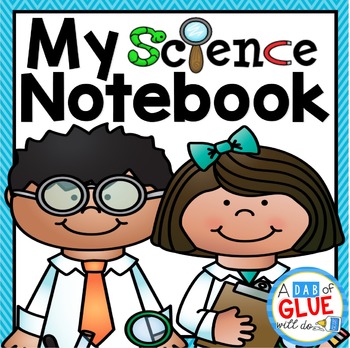My Science Interactive Notebook | Kindergarten Science Journal | K-2 Science
- PDF
What educators are saying
Description
Scientists need a notebook! Engage your little scientists in the exciting lessons and activities within this comprehensive science interactive notebook. This science journal is the perfect companion resource for students in Kindergarten, First Grade, and Second Grade. This notebook is packed full of interactive science material across the disciplines. Inside you'll find activity pages for life science, earth science, and physical science.
Students will learn about science topics such as magnets, five senses, weather, plants, animal habitats, science experiments, and much more!
WHAT'S INCLUDED IN THIS PRODUCT
- "My Science Interactive Notebook" Journal Cover Page
- "My Science Notebook" Journal Cover Page
- Science Notebook Contract
- Table of Contents (2 formats)
- 58 student journal pages (2 formats) 1 full page for teacher and 2 per page for students (perfect for composition journals)
WORK PAGES
- What is a Scientist?
- Science Tools
- I Can Sort By…
- Sort by Size
- Five Senses Circle Map (one for each sense)
- How Does it Feel?
- The Tongue
- Taste Test
- Matter Always Matters
- Write Facts About…
- States of Matter Sort
- Ice Experiment
- Heat
- Light
- Light Travels
- Does Light Shine Through?
- What Makes a Shadow?
- Am I Magnetic?
- How Things Move
- Seasons
- Seasons Circle Map (one for each season)
- Weather During the Year
- Weather
- Recording Weather
- The Sun
- Body of Water
- My Rock
- My Pumpkin
- Types of Soil
- My Leaf
- Living Things
- Nonliving Things
- My Flower Experiment
- Growing a Lima Bean
- Parts of a Plant
- Life cycle of a Plant
- Life Cycle
- Protecting Our Earth
- Animal Habitats
- Animal Adaptations
- Tooth Egg Experiment
- Seasons of an Apple Tree
- Landforms
- All About My Egg
- Oviparous Sort
Note to the Teacher: Activities are aligned to Kindergarten and First Grade Next Generation Science Standards (NGSS), Common Core (CCSS), Texas Essential Knowledge and Skills (TEKS) and Oklahoma Academic Standards (OAS) and were designed be used in any Kindergarten or First Grade classroom.
NGSS: K-2-ETS1-1
CCSS: RI.K.1, W.K.7, SL.K.3
TEKS: K112.11.b.1
OAS-ELA: K.2.W.2
WHAT TEACHERS ARE SAYING:
⭐⭐⭐⭐⭐ "This resource has just what I needed, love that it was ready to be printed in full page or half pages for ISN use. Thank you!!"
⭐⭐⭐⭐⭐ "Thank you for making a product that engaged my students and was enjoyable for them to work on. It covered what we needed to learn."
⭐⭐⭐⭐⭐ "Super engaging and easy to prep! My students love these pages!"
CHECK OUT THESE RELATED PRODUCTS
LET’S CONNECT
➡️Subscribe to our weekly newsletter where you'll receive freebies and be the first to know about sales and new products.
If you have any questions or need help, please email us at hello@adabofgluewilldo.com.
Copyright © A Dab of Glue Will Do, LLC





